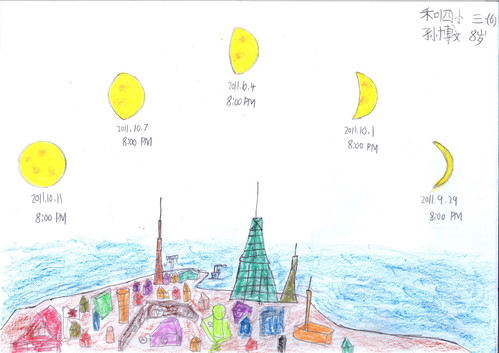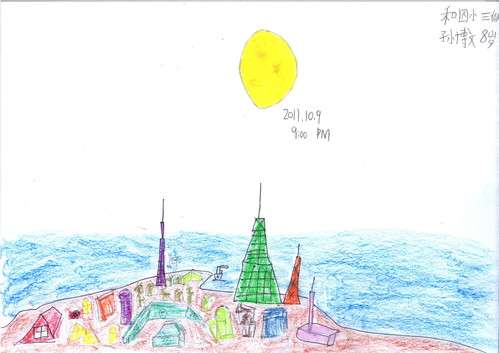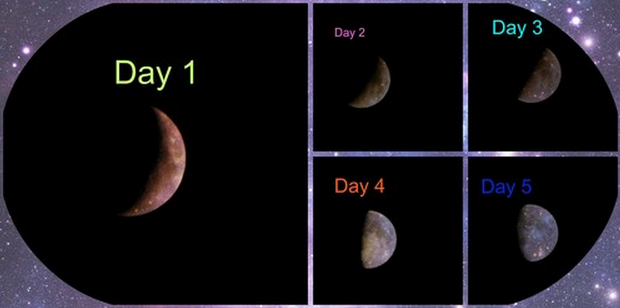Moon Over Us: Phases and Faces, October-November 2022
Topic outline
-
BULLETIN BOARD
PROJECT MOON OVER US: PHASES & FACES (OCT-NOV 2021)- All members of this project, after you have created your Padlet.com account and made a Padlet exclusively for the project, please join the WhatsApp Group by clicking over the link: Moon Over Us Oct-Nov 2021
- Kindly refer to the Activities tab on how to create your Padlet account & make a Padlet for our Moon Over Us Project. There are currently 08 activities associated with the currently active project. Participants are requested to go through the Activities Section which explains them in finer details.
- A Beginner's Level Video about Astrophotography Through Mobile with clicking the Images of the Moon with Mobile Device(s) as a special package is now available for public viewing in the Project under 'Activity 3: First Day Videos'.
-
Forum
-
Welcome to Moon Over Us: Phases and Faces Shared Project!
欢迎来到《我们上方的月

Welcome to the Moon Over Us project. This project promotes the observations of the Moon by students on different continents. Students learn about the Moon, its distance from Earth, and how it changes its shape. Each evening they observe and sketch or take pictures of the Moon during from the first waxing crescent right after the new moon to full Moon and then back to the new moon. As this is happening students add their images to the class Padlet.com webpages with their observations about the changes each day.
In the project, students and teachers from around the world exchange results and analyze the differences of images of the Moon phases and discuss this information by commenting on each others Padlet.com pages.
In addition, students research and share different faces of the Moon, history, beliefs, stories, legends, and poetry about the Moon. The result is an intercultural exchange of explanations about the differences and similarities of each country from the sky, the data gathering technology, and cultural traditions. This is considered a STEAM project.在“我们上方的月亮”里,学生可以学习更多关于月亮在空中运动的知识。在这里,来自世界各地的学生和教师分享关于月球的信息, 并且在每个人的网页上讨论这些信息。
-
A) For teachers:
- View: Create your own Padlet -10 minute version
- Link to our International Project Padlet : Moon Over Us-Phases & Faces (Oct-Nov 2021): Global Observations.
- Team India: Saptarishi India-VIPNET-STEM & Space Padlet: Observing the vibrancies of nature by observing Moon Phases
- MARSG Padlet : Pristine glory of our celestial partner as Earthlings: Moon Over India
B) For Everyone: Take photographs, videos, and record audio (optional) of the Moon over your home each evening. Save the images in .jpg or .png format with the name, latitude and longitude and upload individual images to your classroom Padlet.
Example:- Your Student's Name : Bíbíshá Khátrí
- His/her Location : Ranipauwa_11, Pokhara
- Time of Observation: Around 08 : 30am (Local Standard Time)
- Phase of the Moon Observed: Waning Gibbous
Geographical Location of the Observer(s):
- Longitude : 28.2199⁰N
- Latitude : 83.9976⁰E
When taking the photo, the Moon needs to be low enough in the sky so you can include the ground, trees, or buildings to ensure the picture is right side up. Sometimes the moon is only visible in morning. Take an image in the morning and make sure your label says the correct time and date. If the sky is too overcast, please draw a picture of what the moon should like and upload the picture to the pallet.
从2月1日至7日,每晚拍摄你家上方的夜空以及月亮。你需要拍照片,或者录像录音(非必需)。
C) For Students:
- Record the exact time and place the image was taken. 记录你拍照的确切时间和地点。
- Save the images in .jpg or .png format with your name, the image type, time, date, latitude and longitude.
- Upload individual images to your classroom Padlet.
- Example of student images and recording data in a classroom Padlet from our previous edition of Project Moon Over Us:
This is an activity that needs to be complete 2-3 times a week during the entire project.
When you have images of the eight phases of the moon, please create a collage or other art work that includes the 8 phases. (New Moon may be blank).
活动3:拍摄你的社区
-
Under this section you can view some examples of interactive creativity from the Padlets which were active during the previous cycle of Moon Over Us Project: Jan-May 2021
Each link on this page redirects you to a different school that participated in the project with that school's students' work.
-
The Moon Upside Down:
Phases of the Moon:
Student Activity (self learning):
Mobile Astrophotography-A Beginner's Guide:
-
活动4:网上讨论《我们上方的月亮》
If you are from the USA, please select one gallery from your school and two galleries from other schools that do not have comments. Read the information and comment on the image.
如果你在中国,请选择一页中国学生的网页和两页美国学生的网页,阅读上面的信息然后写下你的评论。请优先选择还没有人评论的网页。
The comment may contain complete sentences with the answers to these questions: What did you find on the page that caught your eye? What information is accurate on the page? What do you like about the page? After comment please ask a question so the creator will reply.
你的评论需要由完整的句子组成,并回答以下问题:你在网页上发现了什么东西非常吸引你的眼睛? 网页上的什么信息非常的详细?你喜欢这个网页的什么地方?
Other international participating schools are also invited to encourage their participants esp. students to engage in interactive comment posting as described above.
-

- When you have all your images uploaded to Padlet, create a collage, video or other piece of art work. 保存你的图像为Jpg格式,并且稍后上传到网站。
- Video or audio recordings can be 30 seconds or shorter and can be recorded with a laptop computer when you take a picture.
- You will use these media items later in this project.
你会需要在活动中用到这些媒体设备。
-
This is a special activity to bring out the creativity of the students on a Classroom Padlet.
Please have your students post their history and believes about the Moon on you Classroom Padlet. You may include information about any (or all) of the following topics:
- What do you know about the Moon's history ?
- Has the Moon been closer to the Earth than it is now?
- Do some research, what is your favourite Moon fact?
- Do some research, what is your favourite idea of how the Moon changes shape?
- Can you tell a story, write a poem, or illustrate something you love or know about the Moon?
- Start a new Padlet topic or reply. We need historical beliefs and facts, answers and questions about the Moon.
-
-
- NASA only has one telescope that does this. It is located in the USA so the angle of the moon is from the Northern Hemisphere.
- You will receive a notice via email when your image has been taken.
- If you have a different telescope available to you, please feel free to use it so we see the moon from a different angle.
- Please save the image as both a .fits or .fts file and a .jpg.
- We will be using the .fts or .fits file in the rest of this activity and the next one.
-
This is a simple version of JS9 image processor for .fts or .fits files. It comes with directions. Please have your students read them carefully and follow them to save the image. We will be using this simple image processor a lot. If you already know JS9 or SalsaJ you may also use either of them. I know there are many other processors but we are staying with these.
-
- Please examine the webpage link and study the types of craters and the complexities of the simple looking features on the Face of the Moon.
- Participants should post their favourite crater and name it. Within the crater they need to count the pixels to measure the distance across the crater using the software JS9-4L.
- Participants need to take a picture of a location present on the Earth which they think shall fit inside the crater to near perfection. With the image as a .jpeg, .fits etc. (ie, acceptable format by NASA), open the same in JS9-4L, equate the pixel size of the image of the location with that of the crater. Superimpose the two images with location/structure in the foreground and the crater in the background.
-
Click the link above, read the instructions and create a crater on the Moon or Earth.
-
-
If your skies are too polluted to see the Moon, you may use the Stellarium for your night sky.
Stellarium is a great tool to use in your classroom with a projector.
